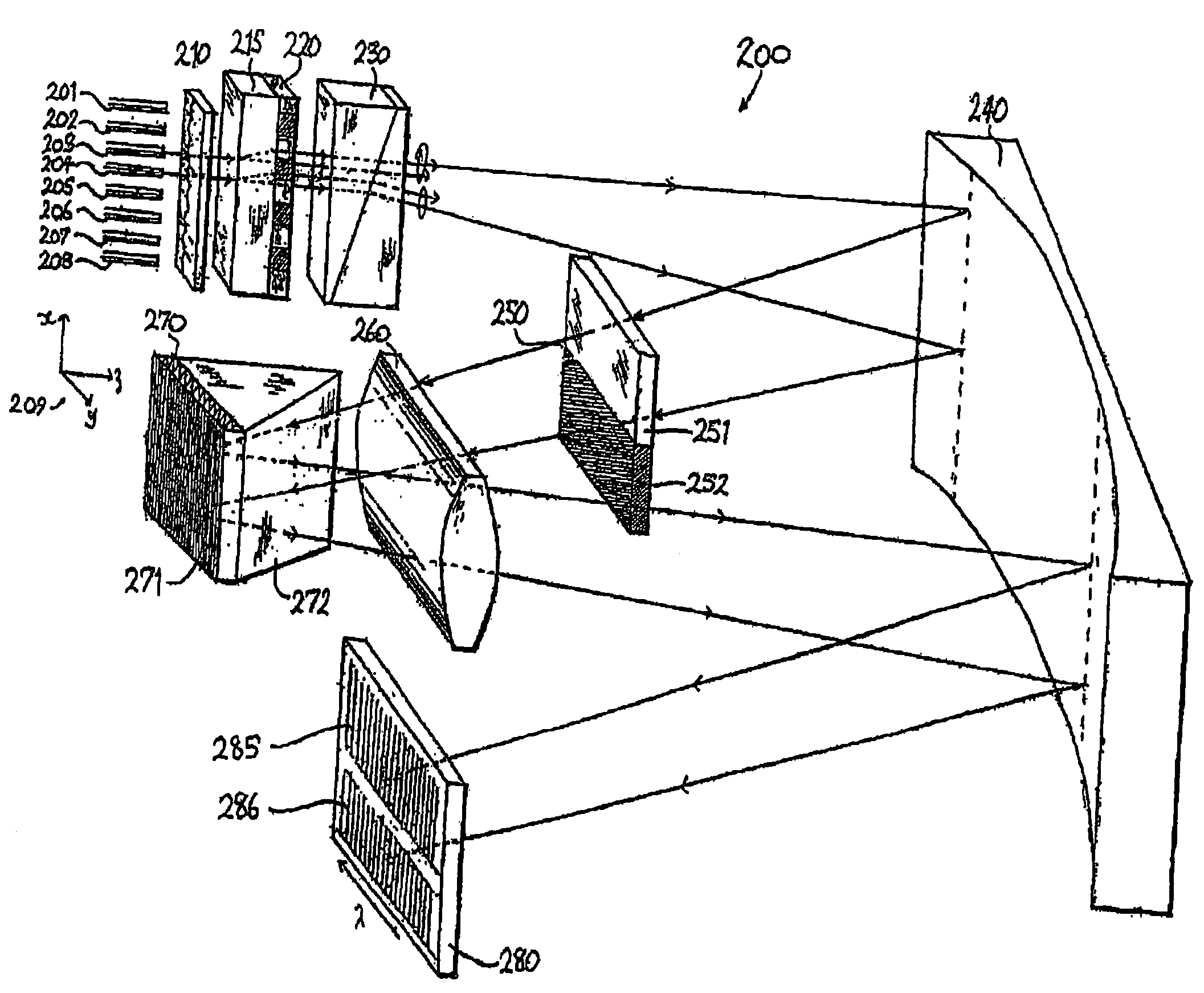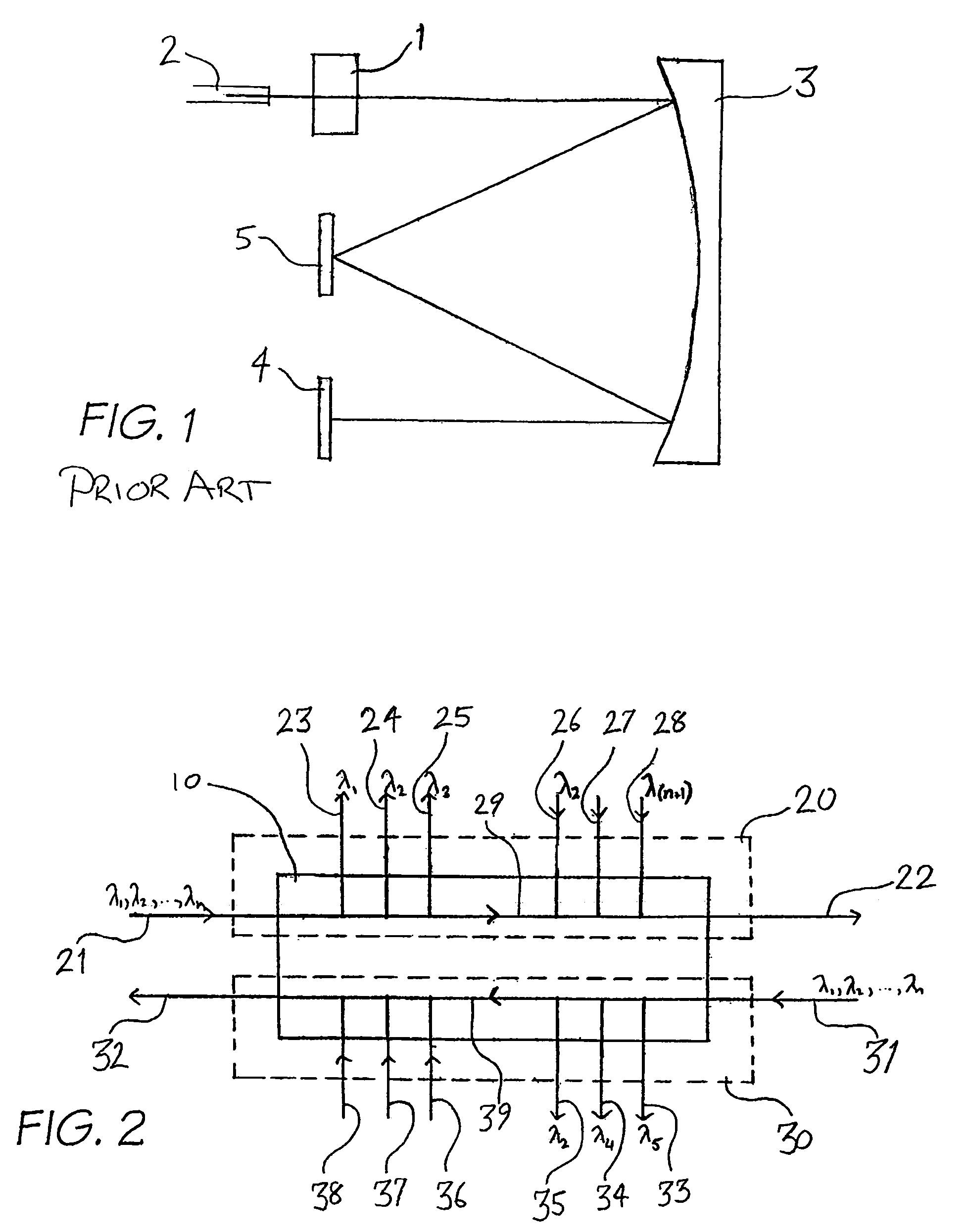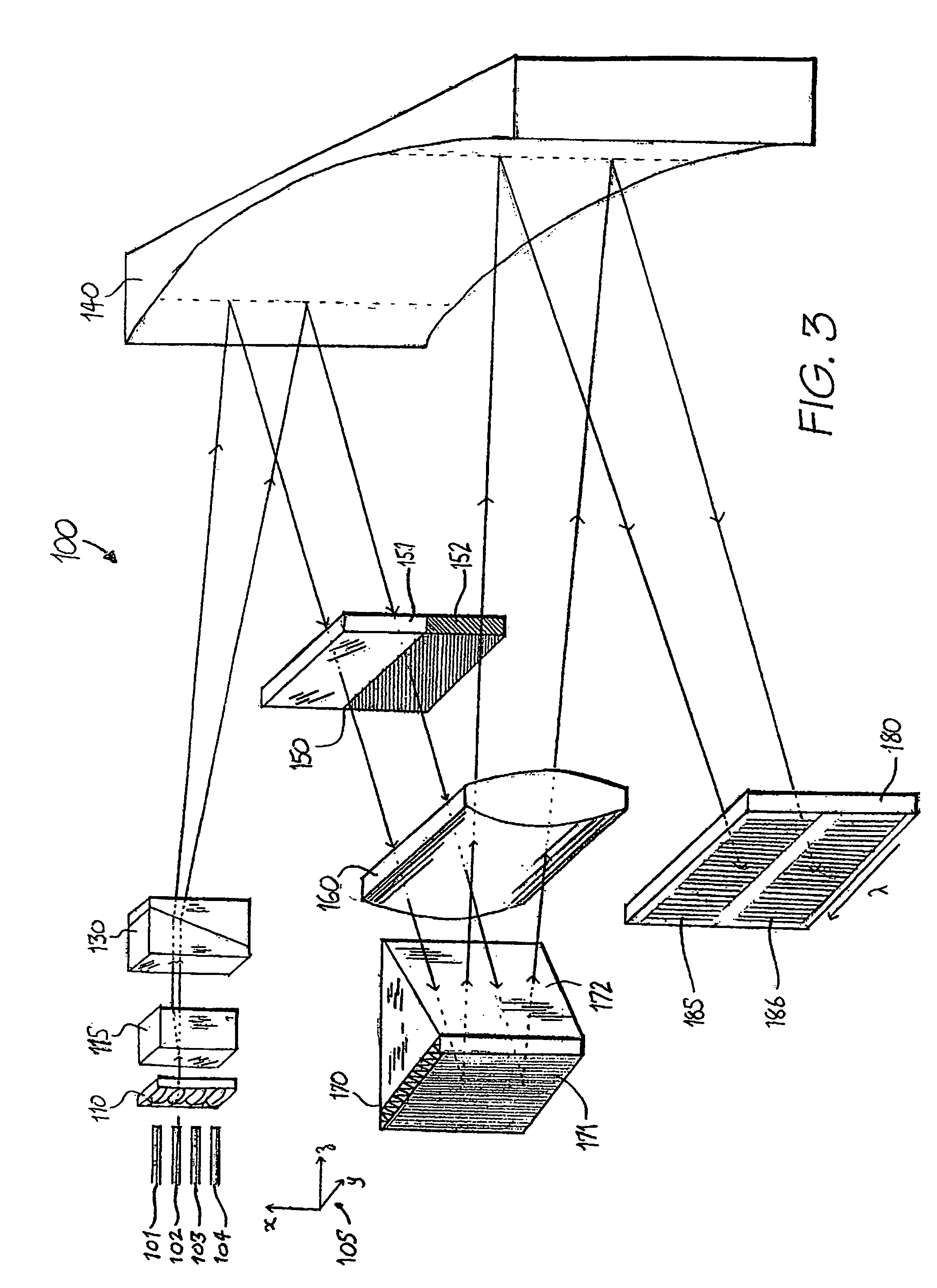Dual-source optical wavelength processor
a processor and optical wavelength technology, applied in the field of optical switches, can solve the problems of increasing the bandwidth of fibre optic communication fibres, increasing the demand for network functionality, and narrowing of optical channels
- Summary
- Abstract
- Description
- Claims
- Application Information
AI Technical Summary
Benefits of technology
Problems solved by technology
Method used
Image
Examples
Embodiment Construction
[0088]The preferred embodiment provides an optical switching device that can operate on individual spatially dispersed wavelength channels contained in an optical signal that originate from either of two input sources. The input sources can be:[0089]a) two unrelated sources possibly delivered to the switch via optical fibre;[0090]b) two orthogonally polarised beams originating from a single source, possibly delivered to the switch via optical fibre;[0091]c) a plurality of input sources, possibly delivered to the switch via optical fibre, separated into orthogonal polarisation states such that the polarisation states of a particular wavelength channel can be acted upon independently;[0092]d) a plurality of input sources, possibly delivered to the switch via optical fibre, optically tagged in a fashion that defines two distinct groups, for example by assigning each of the input sources one of two orthogonal polarisation states.
[0093]FIG. 2 shows a schematic block diagram of a dual-sou...
PUM
 Login to View More
Login to View More Abstract
Description
Claims
Application Information
 Login to View More
Login to View More - R&D
- Intellectual Property
- Life Sciences
- Materials
- Tech Scout
- Unparalleled Data Quality
- Higher Quality Content
- 60% Fewer Hallucinations
Browse by: Latest US Patents, China's latest patents, Technical Efficacy Thesaurus, Application Domain, Technology Topic, Popular Technical Reports.
© 2025 PatSnap. All rights reserved.Legal|Privacy policy|Modern Slavery Act Transparency Statement|Sitemap|About US| Contact US: help@patsnap.com



